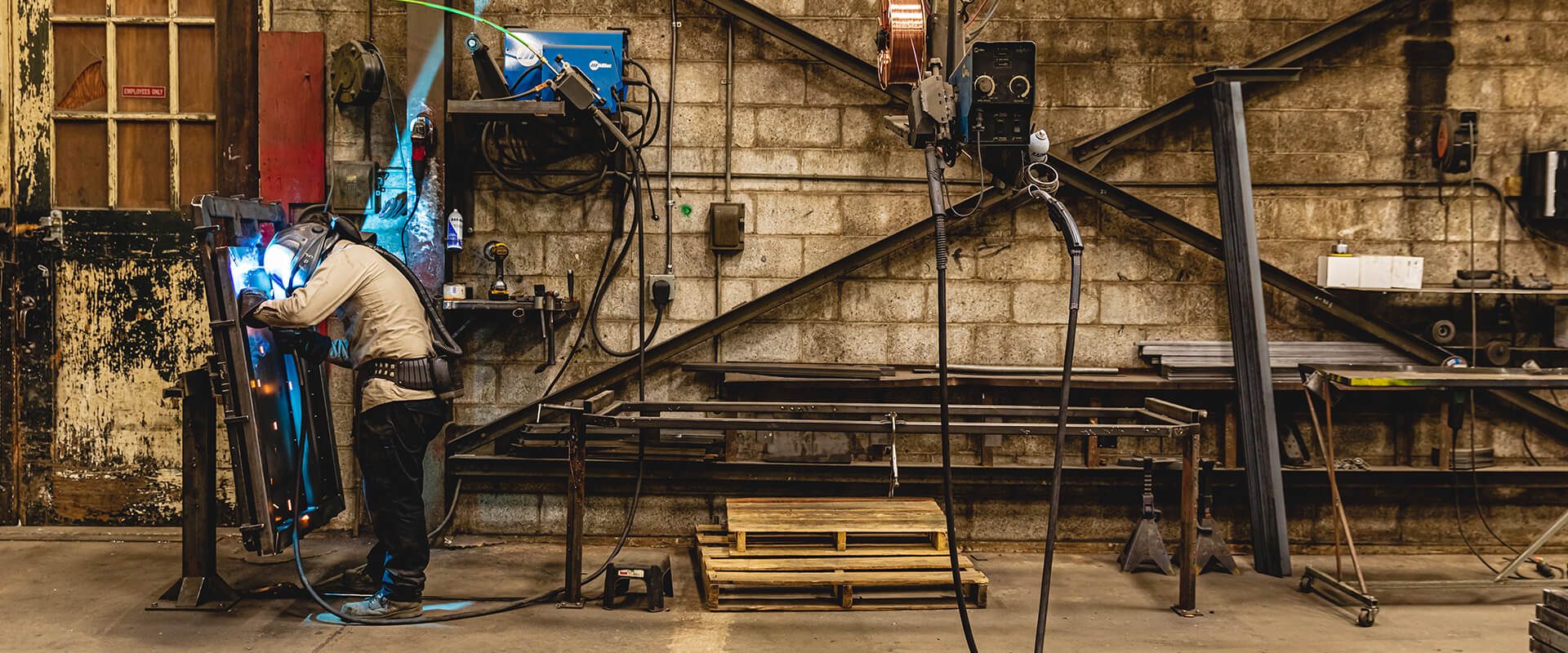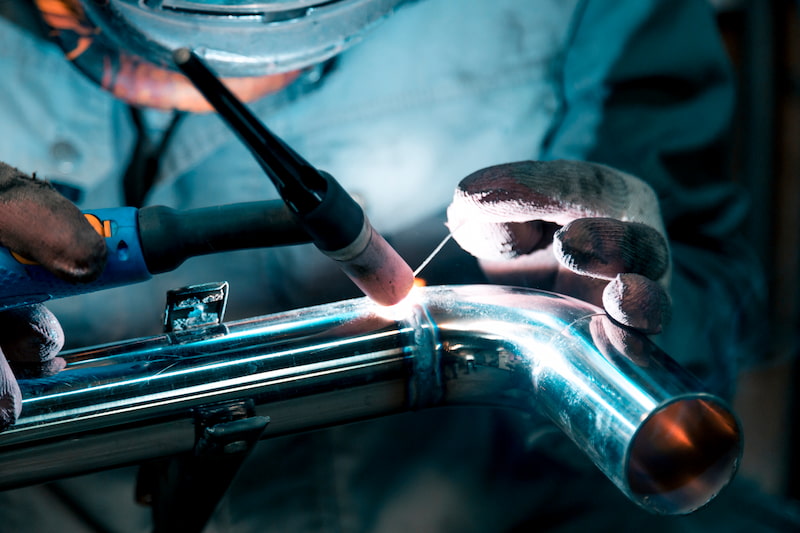Prevent welding failures with guidance by Montana Mobile Welding and Repair Belgrade Fabrication
Common Welding Repair Service Issues and How to Address Them Properly
Welding fixings commonly come across a variety of issues that can endanger the honesty of the end product. Typical issues include inadequate infiltration, porosity, and imbalance, among others. Each problem offers special obstacles that require certain strategies for resolution. Recognizing these concerns is necessary for welders aiming to enhance their outcomes and skills. This conversation will certainly explore these common welding repair problems and efficient methods to resolve them.
Poor Penetration
Poor penetration takes place when the weld metal stops working to totally fuse with the base product, causing weak joints and possible structural failures. This problem frequently comes from insufficient heat input, incorrect electrode angle, or improper welding speed. Welders might come across insufficient penetration as a result of a mistake of the required criteria for a certain material thickness or type. In addition, contamination on the base product's surface can impede efficient bonding, aggravating the trouble. To resolve insufficient penetration, welders need to ensure proper settings on their tools and keep a clean job surface. Regular examination of welds is advised to determine any kind of shortages early, permitting timely corrections and the prevention of compromised structural honesty in bonded settings up.
Porosity
Porosity is a typical flaw in welded joints that shows up as little gas bubbles trapped within the weld steel. This issue can compromise the stability of the weld, resulting in lowered stamina and possible failing under anxiety. Belgrade. Porosity commonly develops from contamination, dampness, or improper welding methods, which permit gases to leave right into the molten weld swimming pool. To resolve porosity, welders ought to ensure correct surface area prep work, keep a clean functioning setting, and utilize appropriate welding specifications. Additionally, selecting the right filler product and securing gas can mitigate gas entrapment. Routine assessment and screening of welds can help identify porosity early, guaranteeing prompt corrective activities are taken, thus protecting the high quality and integrity of the bonded framework
Imbalance
Misalignment in welding can develop from numerous aspects, consisting of incorrect configuration and thermal expansion. Understanding the origin triggers is important for reliable resolution. Several correction strategies are available to straighten components and ensure structural stability.
Reasons for Misalignment
Welding misalignment usually originates from a selection of underlying problems that can jeopardize structural stability. One key cause is improper fit-up of parts prior to welding, which can bring about voids and irregular surface areas. Variants in thermal expansion throughout the welding process can additionally lead to distortion, specifically if the products being joined have different coefficients of development. Additionally, insufficient clamping and fixturing might fail to hold components securely in position, leading to movement throughout welding. Improperly kept equipment, consisting of welding makers and tools, may present incongruities in the weld grain, further adding to misalignment. Operator error, stemming from not enough training or experience, can likewise play a considerable duty in developing misaligned welds.

Adjustment Techniques Offered
Dealing with misalignment properly calls for a mix of corrective strategies tailored to the details issues at hand. One typical method is the use of fixtures or jigs to hold parts in the proper position throughout welding, making sure consistent positioning. Furthermore, pre-heating the products can help in reducing distortion and boost fit-up. For significant misalignment, mechanical realignment methods, such as using hydraulic jacks or clamps, can be utilized to deal with the setting before welding. Post-weld warm treatment may also be needed to soothe stress and anxieties brought on by misalignment. Ultimately, cautious evaluation and adjustment during the setup phase can prevent imbalance concerns from coming to be significant troubles, advertising a smoother welding process and improving total structural integrity.
Distortion
Distortion is a common difficulty in welding that can arise from different elements, including unequal heating & cooling. Comprehending the causes of distortion is vital for applying efficient prevention strategies. Addressing this concern not only boosts architectural integrity yet also boosts the general quality of the weld.
Reasons of Distortion
When subjected to the intense heat of welding, materials typically go through adjustments that can cause distortion. This sensation mostly occurs from thermal development and contraction during the welding process. As the weld area warms up, the material increases; upon air conditioning, it acquires, which can produce interior stresses. Additionally, unequal home heating across a workpiece can exacerbate these stress and anxieties, resulting in warping or flexing. The sort of product likewise plays a substantial function; steels with varying thermal conductivity and coefficients of expansion may react differently, bring about uncertain distortions. Inadequate joint layout and poor fixturing can add to misalignment during welding, raising the possibility of distortion. Recognizing these reasons is essential for efficient welding fixing and avoidance strategies.
Avoidance Techniques
Reliable avoidance techniques for distortion during welding concentrate on regulating heat input and guaranteeing correct joint style. Preserving a constant warmth input assists to lessen thermal development and contraction, which can result in distortion. Making use of techniques such as pre-heating the work surface can additionally lower the temperature level slope, promoting consistent heating. Additionally, choosing ideal joint styles, such as T-joints or lap joints, can improve stability and lower stress focus. Applying proper fixturing to safeguard the work surfaces in position further help in preserving positioning throughout the welding process. Staggered welding sequences can distribute heat much more uniformly, avoiding localized distortion. By applying these strategies, welders can considerably lower the probability of distortion and boost the total high quality of their welds.
Breaking
Cracking is a common problem encountered in welding repair work, often arising from different factors such as inappropriate air conditioning prices, material option, or inadequate joint preparation. The incident of fractures can substantially compromise the stability of the weld, resulting in potential failures throughout operation. To resolve this issue, welders must first evaluate the origin creates, making certain that materials work and appropriately picked for the details application. Additionally, managing the air conditioning rate during the welding procedure is vital; fast air conditioning can induce stress and bring about breaking. Correct joint design and prep work also add to minimizing the danger. Applying these approaches can improve weld quality and durability, inevitably minimizing the chance of breaking in completed weldments.

Incomplete Fusion
A substantial problem in welding repairs is incomplete fusion, which occurs when the weld metal does not effectively bond with the base material or previous weld passes - Montana Mobile Welding and Repair Belgrade Fabrication. This flaw can result in weak points in the joint, possibly endangering the integrity of the welded framework. Elements contributing to insufficient fusion include insufficient heat input, inappropriate welding strategy, and contamination of the surface areas being signed up with. To address this issue successfully, welders must guarantee correct pre-weld cleansing and surface prep work, as well as change their welding parameters to achieve sufficient infiltration and blend. Routine evaluation during the welding procedure can also help determine incomplete combination early, permitting for timely restorative steps to improve the general quality of the weld
Overheating
While welding repair work can enhance structural integrity, overheating offers a significant obstacle that can lead to product destruction. Too much warmth during welding can change the mechanical buildings of metals, leading to reduced stamina, enhanced brittleness, and warping. This sensation is especially essential in high-stress applications where structural reliability is extremely important. Determining getting too hot can include aesthetic inspections for staining or distortion, along with keeping track of temperature during the welding process. To alleviate the risks related to getting too hot, welders need to utilize appropriate techniques, such as regulating warmth input, readjusting travel rate, and using ideal filler products. Furthermore, carrying out pre- and post-weld warm treatments can aid recover material properties and boost the total quality of the repair service, making certain long-term performance and safety and security.
Frequently Asked Concerns
What Are the Typical Indications of a Welding Issue?

Exactly How Can I Test My Welds for High quality?
To test welds for top quality, one can make use of aesthetic evaluations, ultrasonic screening, and radiographic methods. Each technique guarantees architectural stability, recognizes defects, and validates adherence to defined standards, ultimately improving the integrity of the welded joints.
What Safety and security Safety Measures Should I Take While Welding?
When welding, one should prioritize safety by using appropriate personal protective equipment, guaranteeing correct air flow, safeguarding combustible materials away, preserving a clean office, and being aware of surroundings to stop accidents and injuries.
Can I Repair a Weld Without Remodeling the Entire Joint?
Repairing a weld without renovating the whole joint is possible, relying on the damage (Montana Mobile Welding and Repair Belgrade Welding). Techniques such as grinding, adding filler material, or using a welding procedure can efficiently deal with details problems while protecting the surrounding framework
What Equipment Are Essential for Efficient Welding Repairs?
Vital tools for effective welding repairs consist of a welding here equipment, cable brush, grinder, protective gear, clamps, and filler products. Each device plays a crucial duty in guaranteeing top quality and safety during the fixing procedure. Porosity normally arises from contamination, moisture, or incorrect welding strategies, which enable gases to run away into the molten weld pool. Inadequately maintained devices, including welding makers and devices, may present incongruities in the weld grain, additional adding to imbalance. When subjected to the intense warmth of welding, products frequently go through modifications that can lead to distortion. Splitting is an usual concern run into in welding repair services, commonly resulting from various factors such as improper air conditioning prices, material choice, or poor joint preparation. A significant concern in welding repair services is incomplete blend, which takes place when the weld metal does not properly bond with the base material or previous weld passes.